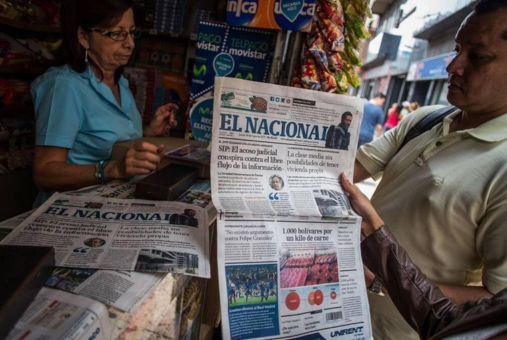
Venezuelan journalists and photojournalists do other jobs outside of journalism to have extra income that allows them to survive. In 20 years of the governments of Hugo Chávez and Nicolás Maduro, 400 media outlets have closed.

The Reuters Institute has analyzed gender inequality and the percentage of people of color in newsroom leadership since 2020. In Mexico, the number of women in top editorial positions is only 6% and, in Brazil, none of the media outlets analyzed has a person of color as editor in chief.

News coverage of climate and biodiversity does not reflect the magnitude of the crisis facing humanity, according to a survey of journalists. According to them, the public is interested, but a lack of resources and editorial lines make it difficult to pay attention to the issue. Incorporating technology into newsrooms could alleviate problems.

Panelists at a Knight Center webinar on ChatGPT in newsrooms suggested experimenting with generative artificial intelligence to understand its scope and limitations, learn how to develop effective prompts, and consider the opportunity to revolutionize the way news is delivered using this new technology.

Exploring how newsrooms can engage financial sustainability efforts was discussed in a panel moderated by Jim Brady, Vice President of Journalism at the John S. and James L. Knight Foundation. The panel delved into how collaboration with non-profits and media organizations that support financial, technological and expertise optimizations can help journalistic entrepreneurs.

Brazilian research developed an analysis model that assesses the impact of journalists' working conditions on the quality of information published. The study was chosen as the best doctoral thesis of the year by the Brazilian Association of Researchers in Journalism.

Research with readers from Latin American countries indicates that the decision to pay for news is associated with the independence and transparency of the news outlet and suggests that digital media should better communicate these values to their potential audience.

There’s no single model for local news organizations to survive, so they must spend some of their efforts experimenting editorially and financially to find a balance that is most unique for each organization, according to the panelists of the session “The New Local News: Reinventing sustainable models to make local journalism survive and thrive in the digital ecosystem,” during the International Symposium on Online Journalism (ISOJ).
Globally, journalists are not keeping pace with the digital revolution. This is according to a recent survey from The International Center for Journalists (ICFJ), “The State of Technology in Global Newsrooms.”
In the last months, the term "passaralho" has been echoed throughout newsrooms in Brazil. This term for those fired from their jobs in the media has gained ground due to numerous cuts that the country's major dailies and magazines -- including O Estado de S. Paulo, Valor Econônomico, Folha de S. Paulo, and the Abril publishing house -- have announced since March.